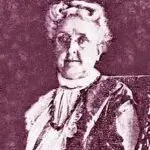Biblical Truth: Because Jesus rose from the dead, His followers are to tell others Jesus lives for them and that He ascended to God the Father for them.
Searching – But Not Finding: John 20:1-2.
[1] Now on the first day of the week Mary Magdalene came early to the tomb, while it was still dark, and saw the stone already taken away from the tomb. [2] And so she ran and came to Simon Peter, and to the other disciple whom Jesus loved, and said to them, “They have taken away the Lord out of the tomb, and we do not know where they have laid Him.” [NASU]
[1] Mary Magdalene came to the tomb very early on the first day of the week, for John tells us that it was still dark. That it was still dark will perhaps explain why Mary did not see the things Peter and John saw later. However, she does not appear to have paused for long enough to see much, whatever the state of the light. Her early arrival is evidence of a determination to get on with the task at the soonest possible moment. It is not clear why John does not mention any woman other than Mary when all the other Gospels tell us that she was not alone. It may be that he knew that she was the first to see the Lord Jesus and that he was not concerned accordingly with the others who did not see Jesus at the same time as Mary. The Synoptists tell us that the women came with spices to anoint the body. Why this should be done when Nicodemus had brought such a large quantity is not clear. Probably, in view of the lateness of the hour and the nearness of the Sabbath, Nicodemus was not able to use all the spices he had brought in the way intended. Something remained to complete the process of burial, and the women came to do this. John proceeds to tell us that Mary saw that the stone had been taken away from the tomb. The women had been anxious about this, since they knew they could not roll it away themselves.
[2] Mary’s immediate reaction was to tell the disciples. She ran to Simon Peter, who appears still to have been recognized as the leading apostle, despite the denials. She had seen that the tomb was empty and concluded that the body had been stolen. It is interesting to notice that apparently the thought of a resurrection did not enter her head. So she told Peter and the beloved disciple that the body had been taken away. Mary adds we do not know where they have laid Him. The plural we indicates that other women were associated with her in the discovery, though she is the only one John mentions. The robbing of graves was a crime sufficiently common that the Emperor Claudius (AD 41-54) eventually ordered capital punishment to be meted out to those convicted of destroying tombs, removing bodies or even displacing the sealing stones. So it is not surprising that the sight of the removed stone prompted Mary Magdalene to draw the conclusion she did.
Believing – But Not Understanding: John 20:3-10.
[3] Peter therefore went forth, and the other disciple, and they were going to the tomb. [4] And the two were running together; and the other disciple ran ahead faster than Peter, and came to the tomb first; [5] and stooping and looking in, he saw the linen wrappings lying there; but he did not go in. [6] Simon Peter therefore also came, following him, and entered the tomb; and he beheld the linen wrappings lying there, [7] and the face-cloth, which had been on His head, not lying with the linen wrappings, but rolled up in a place by itself. [8] So the other disciple who had first come to the tomb entered then also, and he saw and believed. [9] For as yet they did not understand the Scripture, that He must rise again from the dead. [10] So the disciples went away again to their own homes. [NASU]
[3-5] The disciples apparently wasted no time talking but set off to see for themselves. They took off running and the beloved disciple outran Peter to the tomb. Apparently he was a somewhat hesitant man. He contented himself with stooping outside and looking in. From this position he could see the linen clothes lying. No mention is made of the head cloth. Presumably this was not visible from where he was.
[6-7] Peter arrived second but, true to his nature, he impetuously rushed right into the tomb. He not only saw the strips of linen but also the burial cloth that had been around Jesus’ head. Apparently this could not be seen from the entrance. The flow of the passage from verses 5 to 8 suggests that John did not see the latter piece of cloth until he too entered the tomb. The cloth was folded up by itself separate from the linen. John is plainly describing an orderly scene, not one of wild confusion. This means that the body had not been taken by grave robbers. They would have taken the body, cloths and all, or would have torn the cloths off and scattered them. Note here the contrast with the resurrection of Lazarus where he came from the tomb wearing his grave clothes, the additional burial cloth still wrapped around his head. Jesus’ resurrection body apparently passed through his grave clothes, spices and all, in much the same way that he later appeared in a locked room. The description of the burial cloth that had been around Jesus’ head does not suggest that it still retained the shape of the corpse. But it had been neatly rolled up and set to one side by the one who no longer had any use for it.
[8] Timid at first, the beloved disciple, doubtless emboldened by Peter, entered the tomb and saw the place where the Master lay – now nothing but linen grave clothes and the additional burial cloth that had been around Jesus’ head. With sudden intuition he perceived that the only explanation was that the Jesus who had been crucified, the Jesus who had so recently assigned him His mother, the Jesus who had been buried in this new tomb, had risen from the dead. The beloved disciple saw and believed and thus John introduces the themes of seeing and believing that reach their climax in verse 29. Most of the early witnesses came to faith in Jesus as the resurrected Lord not because they could not find His corpse but because they found Christ alive. But John testifies that he came to such faith before he saw Jesus in resurrected form. And he took this step, not simply because the tomb was empty, but because the grave clothes were still there.
But if the empty tomb did not receive great prominence in the earliest apostolic preaching [cf. 1 Cor. 15:3-7], New Testament writers nevertheless recognized the strategic importance of the empty tomb for both history and theology. Historically, the preaching and the rapid growth of the early church are unexplainable apart from the historical truth of an empty tomb and a literal resurrection. Theologically, the empty tomb rules out any re-interpretation of the resurrection that would define it in just spiritual terms without connecting the resurrection experiences of Jesus’ followers to a verifiable empty tomb. Thus the historical event of the empty tomb and the resurrection appearances of the risen Christ form the basis for the truth claims of the Christian faith. To re-word an old hymn: You ask me how I know He lives; I know because of the empty tomb and the resurrection appearances to more than five hundred brethren [1 Cor. 15:6].
[9-10] Neither Peter nor the beloved disciple at this point understood from Scripture that Jesus must rise again from the dead. By the time that John wrote his Gospel that was no longer the case. The church had worked out a detailed understanding of the Old Testament by which to understand and explain the life, ministry, death and resurrection of their Lord. At this point, however, the fledgling faith of the beloved disciple was grounded on what he had seen and not seen in the tomb.
Seeing – But Not Recognizing: John 20:11-15.
[11] But Mary was standing outside the tomb weeping; and so, as she wept, she stooped and looked into the tomb; [12] and she beheld two angels in white sitting, one at the head, and one at the feet, where the body of Jesus had been lying. [13] And they said to her, “Woman, why are you weeping?” She said to them, “Because they have taken away my Lord, and I do not know where they have laid Him.” [14] When she had said this, she turned around, and beheld Jesus standing there, and did not know that it was Jesus. [15] Jesus said to her, “Woman, why are you weeping? Whom are you seeking?” Supposing Him to be the gardener, she said to Him, “Sir, if you have carried Him away, tell me where you have laid Him, and I will take Him away.” [NASU]
[11] There is something very moving about this first meeting of the risen Lord with any of His followers. There is moreover a wonderful condescension involved, for we have no reason to think of Mary as being a particularly important person. Yet it was to her and not to any of the outstanding leaders in the apostolic band that the Lord appeared first. But, in contrast to Peter and John who went home, Mary was standing just outside the tomb and weeping. John says nothing about her return to the tomb, nor about whether she got there before the two men left. He simply pictures her as standing at the tomb and weeping. While she continued weeping she stooped down and peeped in, just as John had done in verse 5. Though she had been at the tomb before, this is the first mention of her looking inside it.
[12-13] She sees two angels who do not play a major part in the incident that John is describing. Their one function is to ask Mary why she is crying, after which we hear no more of them. Mary’s reply is much like her words to the disciples in verse 2, though now she uses the singular I do not know. There are no other women to be associated with her at this moment. The question concerns her personal grief and her answer related to this only. The depth of her grief is perhaps due to the emphasis the Jews of the day placed on correct and proper burial. They regarded with abhorrence any disrespect paid to a corpse. Uncertainty as to what had happened to Jesus’ body was worrying Mary and distressing her deeply.
[14] No answer of the angels is recorded. Perhaps Mary withdrew abruptly. She may have heard a movement behind her. Or the angels may have made some motion at the sight of the Lord behind Mary. We do not know. At any rate she turned around and saw Jesus standing there. Why she did not recognize Him is not said. It is possible that tears were blurring her vision, but then tears are not usually a reason for failure to recognize someone well known. There seems to have been something different about the risen Jesus so that He was not always recognized. The walk to Emmaus is the outstanding example of this, but we see the same thing at the miraculous draught of fishes [21:4], and Matthew tells us that when the disciples saw Jesus on a mountain in
[15] Jesus repeats the question of the angels, Woman, why are you weeping? and adds Whom are you seeking? Notice that He says whom and not “what”. This might have started Mary along the right track. She was looking for a corpse whereas she should have been seeking a person. Why Mary took Him for the gardener is not clear. Perhaps it was the only logical thing. Who else would be in the garden so early, and who else would question her as to what she was doing? What is certain is that she did take Him for the gardener and she leapt to the conclusion that he may well have carried off the body of her Lord. So she asks whether this were the case, and lets Him know that she wants to take the body away. She does not say “in order to give it decent burial” but that is implied. Interestingly, she says nothing of whose body she meant, nor even that she did mean a body. Her answer presupposes quite a bit of knowledge of the circumstances. But that is quite understandable, given the depths of her grief. A thoroughly grief-stricken person does not make allowances and go into full explanations. Notice the repetition of him. This was what filled her thoughts to the exclusion of all else. It has often been pointed out that it would have been difficult for Mary unaided to take Him away. So it would. But grief such as Mary’s does not perform exact calculations as to the weight which can be lifted. Overall, John paints a picture of a woman overcome with grief and anxiety at the empty tomb.
Seeing – And Telling: John 20:16-18.
[16] Jesus said to her, “Mary!” She turned and said to Him in Hebrew, “Rabboni!” (which means, Teacher). [17] Jesus said to her, “Stop clinging to Me, for I have not yet ascended to the Father; but go to My brethren, and say to them, ‘I ascend to My Father and your Father, and My God and your God.’” [18] Mary Magdalene came announcing to the disciples, “I have seen the Lord,” and that He had said these things to her. [NASU]
[16] With a masterly economy of language John tells how Mary came to know that it was the Lord. Jesus utters but one word, her name. Mary turns. Evidently, after turning towards Jesus she had turned back to the tomb. This further act of turning indicates that something in the way the name was spoken caught her attention. When the Good Shepherd calls His sheep they know His voice. Immediately she calls out in Aramaic the word Rabboni, which John translates for the benefit of his Greek readers. It indicates plainly enough that Mary had come to recognize Jesus.
[17] This verse presents us with some problems. The first is in the words Stop clinging to Me. There seems no reason why Mary should not touch Him, and indeed Matthew tells us that when the women first saw the risen Lord they came up and took hold of His feet and worshiped Him [28:9]. Probably we should understand the Greek tense here in the strict sense. The present imperative with a negative means “stop doing something” rather than “do not start something”. Evidently Mary in her joy at seeing the Lord had laid hold on Him, possibly in the same way and for the same purpose as the women in Matthew 28:9. The references to ascending are not completely clear. It is not easy to see what difference the ascension could make to Mary’s clinging to Jesus. Part of the thought appears to be that Jesus was not simply returning to the old life. Mary was reacting as though He were. As He had not yet ascended He could appear to her, but she must not read into this a simple return to the former state of affairs (such as no doubt happened in the case of Lazarus). It is as though Jesus were saying, “Stop clinging to Me. There is no need for this, as I am not yet at the point of permanent ascension. You will have opportunity of seeing Me.” In the message to the brethren the verb ascend is in the present tense. This tense may denote future action, but with the thought of certainty. It appears that Jesus’ message is: “Although I have not yet ascended, it is certain that I will ascend to my Father soon.” Finally we should notice that Jesus refers to God as My Father and your Father, and My God and your God. It seems as though He is purposely placing Himself in a different relationship to the Father from that which His followers occupy. This has important implications for an understanding of Christ’s Person. The disciples must never forget that, whereas His Sonship to the Father is by nature and right, theirs is only by adoption and grace, in and through Him.
[18] Mary goes and reports to the disciples that she has seen the Lord and that He said certain things to her. There is a change from direct speech, I have seen the Lord, to indirect speech, that He had said these things. This has the effect of highlighting the significant words and putting emphasis on Mary’s experience of actually seeing the risen Lord.
Questions for Discussion:
1. What caused John to believe that Jesus had been resurrected?
2. Why is Jesus’ resurrection the key to the Christian faith [see 1 Cor. 15:12-19]? Why is the historicity of the resurrection and the empty tomb essential to defending the truthfulness of the Christian faith? Why does the resurrection separate Christianity from all other religions?
References:
The Gospel According to John, D. A. Carson, Eerdmans.
The Gospel According to John, Leon Morris, Eerdmans.

















